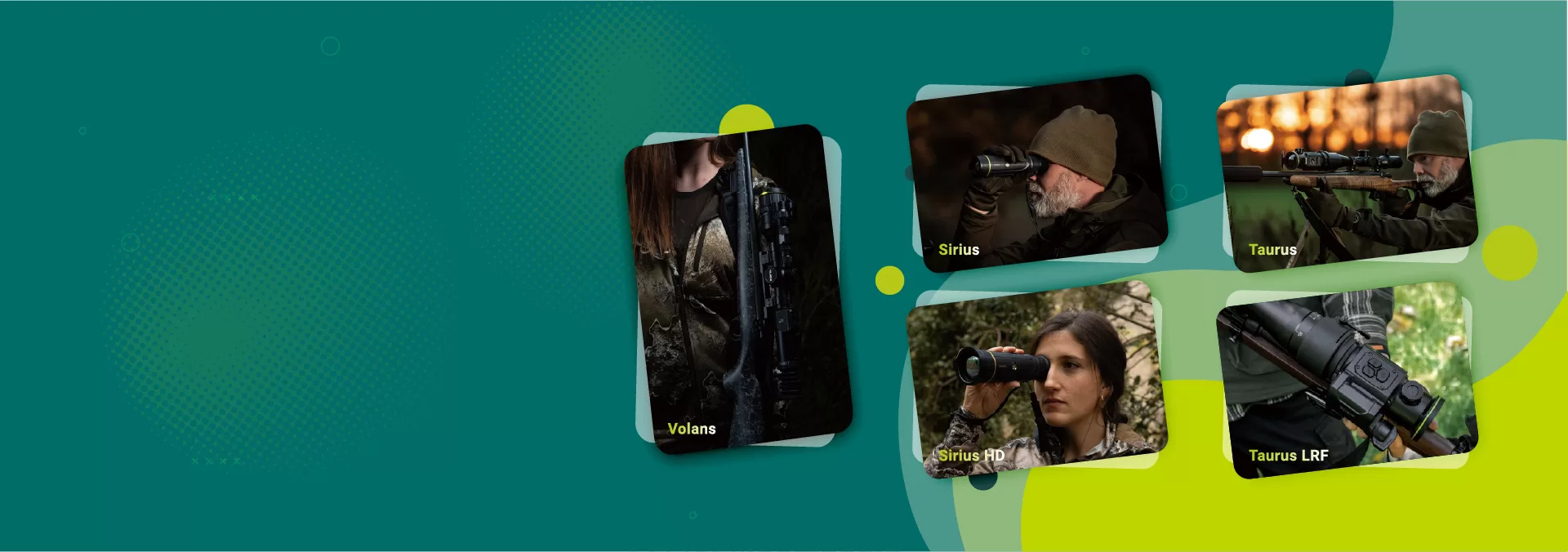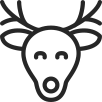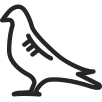The landscape of night hunting regulations across America is evolving faster than ever before. What was illegal just five years ago might now be perfectly legal in your state – and what was permitted last season might suddenly be prohibited. This rapid evolution of night hunting laws stems from several converging factors that are reshaping how wildlife agencies approach after-dark hunting activities.
Technological advancements in thermal imaging have transformed what’s possible after sunset. As devices like the Pixfra Vulcan thermal scope make night hunting increasingly effective, wildlife agencies are adjusting regulations to balance hunter opportunity with wildlife management goals. This technological revolution has forced state agencies to revisit decades-old regulations that never anticipated the capabilities modern hunters now possess.
Invasive species management has become another major driver of regulatory change. Many states that once prohibited all forms of night hunting have created exceptions specifically targeting feral hogs, coyotes, and other invasive or nuisance species. The economic impact of these animals on agriculture has pushed legislators to reconsider traditional hunting restrictions, creating a patchwork of species-specific regulations that vary dramatically between states.
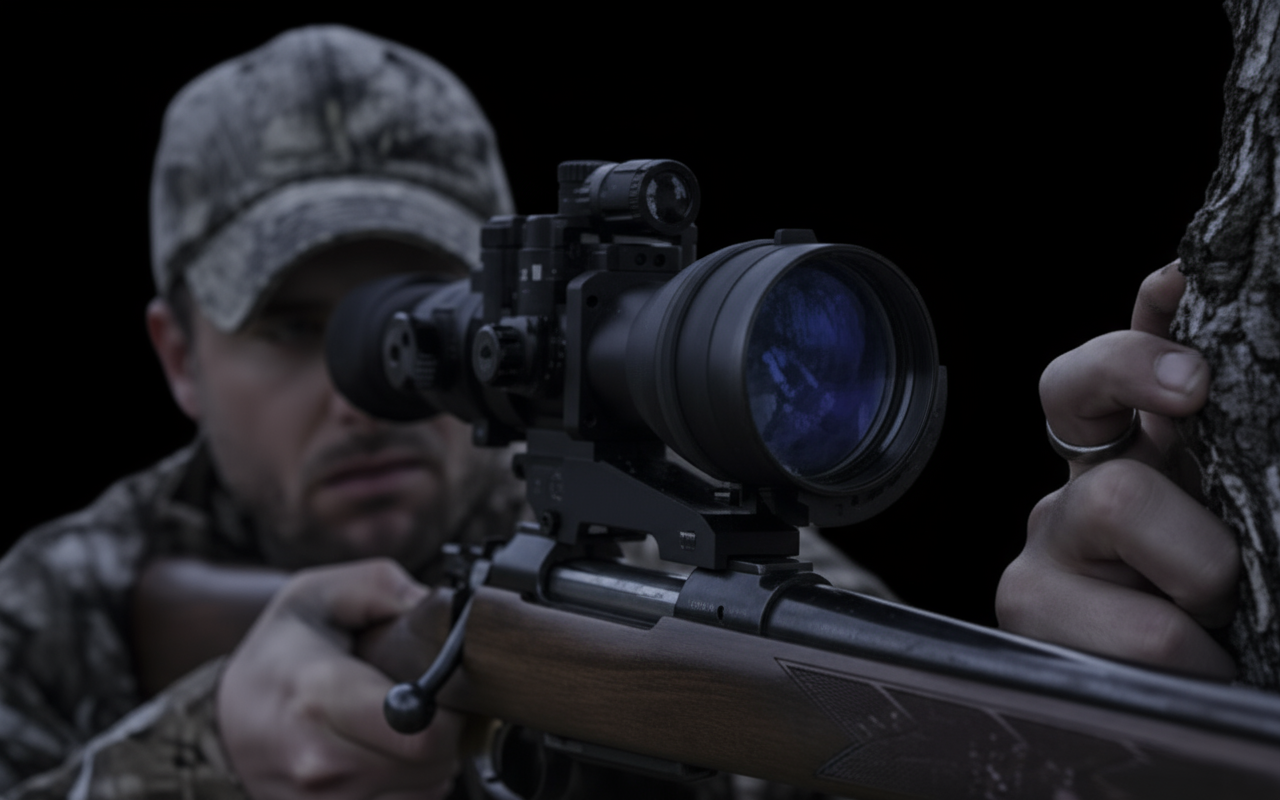
Hunting safety concerns continue to influence night hunting regulations, with some states maintaining strict prohibitions while others implement specialized licensing requirements, designated season structures, or mandatory hunter education components specific to night operations. These safety-focused regulations often create the most confusion for traveling hunters, as requirements can vary dramatically even between neighboring states.
Public land access for night hunting represents another area of significant variation, with many states permitting night hunting on private property while maintaining prohibitions on state or federal lands. These distinctions create critical compliance challenges for hunters who must navigate multiple regulatory frameworks depending on property boundaries that may be difficult to discern in darkness.
The regulatory landscape for night hunting will likely continue evolving rapidly as wildlife agencies respond to changing wildlife management priorities, technological advancements, and shifting public perspectives on night hunting activities. Staying current with these changes is essential for responsible hunters looking to take advantage of the unique opportunities night hunting provides while remaining fully compliant with all applicable regulations.
Northeast Region Night Hunting Regulations
The northeastern states maintain some of the strictest night hunting regulations in the country, reflecting their densely populated nature and long-established hunting traditions. However, recent years have seen notable changes as these states adapt to growing predator populations and emerging wildlife management challenges.
Maine stands out as having the most progressive night hunting regulations in the Northeast, with coyote night hunting permitted from December 16 to August 31. Hunters must obtain a night hunting permit ($4 resident, $12 non-resident) and can use lights and thermal optics, though artificial feeding or baiting for night hunting is prohibited. The state recently expanded night hunting opportunities by adding raccoons to the approved species list for night hunting with a valid trapping license.
New Hampshire permits night hunting for coyotes from January 1 through March 31, but with significant restrictions compared to neighboring Maine. Artificial lights are permitted, but thermal imaging devices like the Pixfra Vulcan thermal scope remain prohibited. The state has been considering regulatory changes that would permit thermal imaging for predator management, but as of the 2025 season, traditional night vision and spotlights remain the only legal night hunting methods.
Vermont maintains strict limitations on night hunting, permitting only raccoon hunting with dogs during authorized seasons. All forms of predator night hunting remain prohibited, though the state legislature has recently debated a bill that would authorize limited coyote night hunting on private agricultural lands where documented livestock depredation has occurred.
New York allows night hunting for coyotes from October 1 through March 31, but prohibits the use of lights or vision-enhancing devices of any kind. This effectively limits night hunting to moonlit nights or specialized setups overlooking areas with significant ambient light. Recent regulatory discussions have considered a limited thermal imaging authorization for agricultural protection, but no formal changes have been implemented for the 2025 season.
Pennsylvania prohibits all forms of night hunting for game animals but does permit spotlighting without firearms as an observation method. Limited exceptions exist for raccoons, opossums, and foxes during their respective seasons, but predator hunting after dark remains prohibited regardless of technology or methodology.
Massachusetts, Connecticut, and Rhode Island maintain complete prohibitions on night hunting for all species, with strictly enforced penalties for violations. These states have shown no regulatory movement toward permitting expanded night hunting opportunities, maintaining their traditional positions despite changes in neighboring states.
The northeastern region generally demonstrates the most resistance to expanding night hunting opportunities, with wildlife agencies frequently citing safety concerns related to population density as the primary limiting factor. However, the growing success of limited night hunting programs in states like Maine suggests potential for gradual regulatory evolution throughout the region in response to changing wildlife management priorities.
Southeast Region Night Hunting Laws
Southeastern states have implemented some of the most permissive night hunting regulations in the country, particularly for invasive species management. These regulations often include specific provisions for thermal imaging technology, creating expanded opportunities for hunters using advanced optics like the Pixfra Vulcan thermal scope.
Texas leads the nation in night hunting access, with year-round night hunting permitted for feral hogs, coyotes, and other non-game animals on private land with landowner permission. The state places no restrictions on hunting methods or equipment for these species, allowing full use of thermal imaging, night vision, or traditional lighting methods. Public land access for night hunting remains more restricted, with specific regulations varying by property.
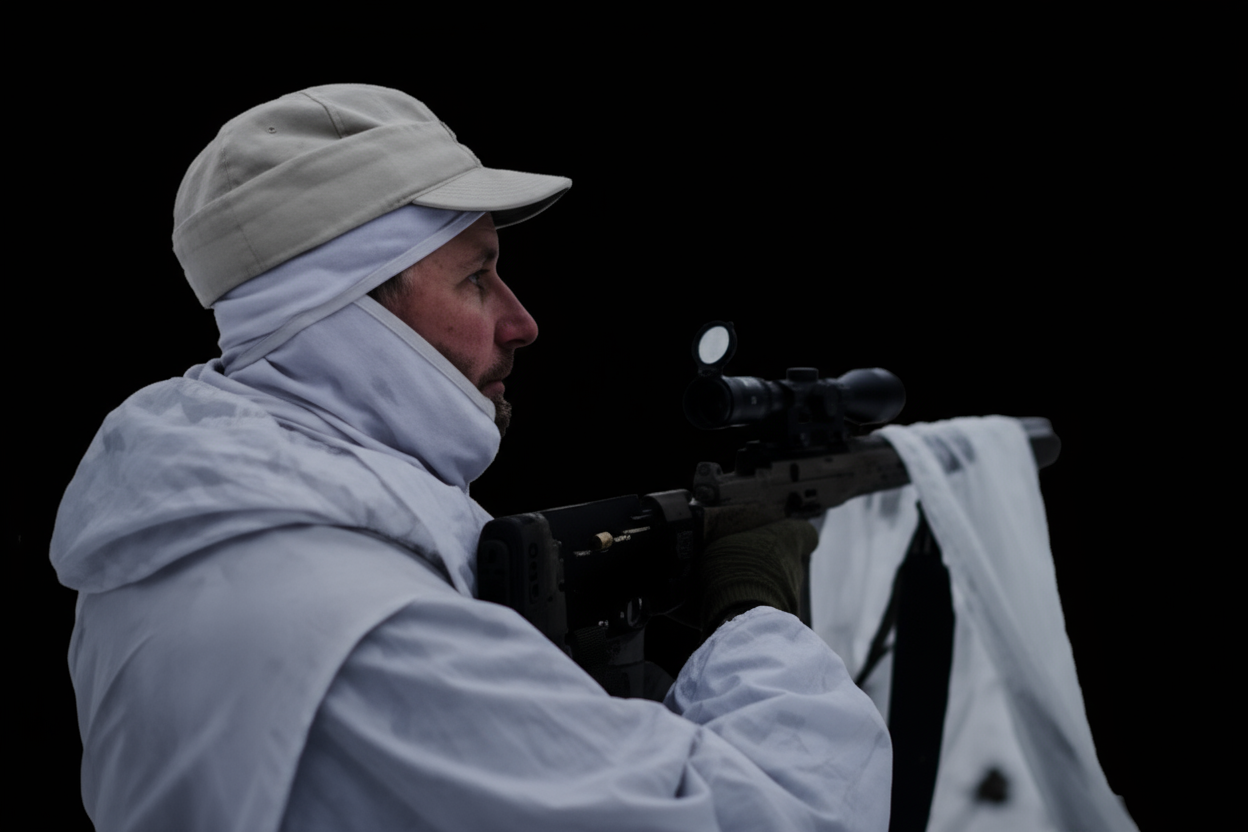
The state’s progressive approach reflects the significant agricultural damage caused by feral hogs, with economic losses exceeding $500 million annually according to research from Texas A&M AgriLife Extension. This agricultural impact has motivated wildlife officials to maximize hunter opportunities for population control, creating some of the most permissive regulations nationwide.
Georgia allows night hunting for feral hogs year-round on private land with landowner permission, but requires a free permit available from the Department of Natural Resources. The state recently expanded equipment authorizations to include all forms of thermal and night vision technology, removing previous restrictions that limited effectiveness. Coyote night hunting is permitted from March through October, with specific regulations regarding light usage.
Florida permits night hunting for coyotes, feral hogs, raccoons, opossums, and beavers year-round on private property with landowner permission. The state recently updated its regulations to explicitly authorize thermal imaging devices, removing previous ambiguity regarding technology restrictions. Limited night hunting opportunities exist on Wildlife Management Areas, with specific regulations listed for each property.
Alabama allows night hunting for feral hogs and coyotes on private land with a special permit ($15 for residents, $51 for non-residents). The season runs from February 11 to November 1, with thermal imaging devices explicitly authorized in the regulations. The state has progressively expanded night hunting opportunities in recent years, responding to growing feral hog populations causing significant agricultural damage.
South Carolina permits night hunting for feral hogs, coyotes, and armadillos year-round on private land with specific equipment requirements and restrictions. Hunters must notify the Department of Natural Resources at least 48 hours before hunting at night, providing specific location information. The state has recently streamlined this notification process through an online system, simplifying compliance for regular night hunters.
Tennessee allows night hunting for raccoons, opossums, and other small game during designated seasons, but maintains restrictions on predator hunting after dark in most areas. However, a special landowner exemption permits night hunting for coyotes and feral hogs on private agricultural lands with documented crop damage. This exemption requires specific authorization from the wildlife agency but does permit the use of thermal imaging equipment.
Most southeastern states have moved toward expanded night hunting opportunities, particularly for invasive and nuisance species management. These regulatory changes reflect both the agricultural impact of these species and the effectiveness of night hunting as a management tool when combined with modern technology like thermal imaging devices.
Midwest Region Night Hunting Regulations
Midwestern states have implemented varied approaches to night hunting, with significant regulatory differences even between neighboring states. These variations create important compliance considerations for hunters operating near state boundaries or traveling throughout the region.
Missouri allows night hunting for coyotes from February 1 through March 31, with lights and thermal imaging devices permitted on private land with landowner permission. The state has gradually expanded night hunting opportunities in response to growing coyote populations, with recent regulatory changes explicitly authorizing thermal technology like the Pixfra Vulcan thermal scope that was previously prohibited.
Kansas permits year-round night hunting for coyotes on private land, with landowner permission required and specific equipment restrictions in place. While artificial lights are permitted during authorized seasons, thermal imaging devices remain in a regulatory gray area, with current regulations neither explicitly authorizing nor prohibiting their use. The state wildlife agency has indicated that regulatory clarification regarding thermal technology is forthcoming, potentially expanding equipment options for the 2026 season.
Nebraska allows night hunting for coyotes on private land year-round with written landowner permission. The state recently updated its regulations to explicitly permit thermal imaging devices during night hunting operations, removing previous ambiguity that had created compliance challenges for hunters utilizing modern technology. Public land night hunting remains prohibited throughout the state.
Iowa prohibits most forms of night hunting but does provide a special authorization for coyote hunting on private land from January 1 through March 31. This authorization requires county-specific approval and includes significant restrictions on equipment and methodology. Thermal imaging devices remain prohibited under current regulations, though wildlife officials have initiated a regulatory review process examining potential technology authorizations for future seasons.
Minnesota allows night hunting for raccoons, foxes, and coyotes under specific regulations that vary by species. Coyote night hunting is permitted from January 1 through March 15, with artificial lights allowed but thermal imaging prohibited. The state legislature recently considered a bill that would authorize thermal equipment for predator management, but the measure failed to advance during the most recent legislative session.
Wisconsin prohibits night hunting for most species but does permit limited after-hours hunting for raccoons and foxes when hunting with dogs. All forms of predator night hunting were previously prohibited, but the state recently implemented a limited coyote night hunting season from January 1 through February 15, though with significant restrictions including prohibition of lights and thermal devices.
Michigan allows limited night hunting for coyotes, fox, raccoons, and opossums during specified seasons, with artificial lights permitted but thermal imaging devices prohibited. The state has maintained consistent regulations regarding night hunting for several years, though wildlife officials have acknowledged growing pressure to authorize expanded technology options for predator management.
Most midwestern states maintain more restrictive night hunting regulations compared to southern regions, with thermal imaging technology facing greater regulatory limitations. However, the general trend throughout the region shows gradual expansion of night hunting opportunities, particularly for predator management on private agricultural lands affected by coyote depredation.
| State | Night Hunting Legal? | Species Allowed | Thermal Optics Legal? | Special Permits Required? |
|---|---|---|---|---|
| Missouri | Yes (Limited Season) | Coyotes | Yes | No (Landowner Permission) |
| Kansas | Yes (Year-Round) | Coyotes | Gray Area | No (Landowner Permission) |
| Nebraska | Yes (Year-Round) | Coyotes | Yes | No (Written Permission) |
| Iowa | Yes (Limited Season) | Coyotes | No | Yes (County-Specific) |
| Minnesota | Yes (Limited Season) | Raccoons, Foxes, Coyotes | No | No |
| Wisconsin | Yes (Very Limited) | Raccoons, Foxes, Limited Coyote | No | No |
| Michigan | Yes (Limited Season) | Coyotes, Fox, Raccoons, Opossums | No | No |
Western states present some of the most varied night hunting regulations in the country, with approaches ranging from nearly complete prohibition to expansive authorization depending on specific wildlife management priorities and regional conditions. These variations create critical compliance considerations for hunters operating across multiple western states.
Montana permits night hunting for predators including coyotes year-round on private land with landowner permission. The state recently updated its regulations to explicitly authorize thermal imaging devices, removing previous restrictions that had limited technological options. This regulatory change reflects growing recognition of thermal technology’s effectiveness for predator management in agricultural regions experiencing livestock depredation.
Wyoming allows night hunting for predatory animals (coyotes, jackrabbits, porcupines, raccoons, red fox, skunks, and stray cats) on private land with landowner permission. State regulations specifically authorize artificial lighting but remain silent on thermal imaging technology, creating a regulatory gray area that most enforcement officers interpret as prohibiting thermal devices like the Pixfra Vulcan thermal scope. The state’s wildlife agency has indicated that regulatory clarification regarding thermal imaging is under consideration.
Colorado prohibits hunting wildlife after legal sunset except for raccoons, bobcats, striped skunks, and coyotes, which may be hunted at night with artificial light on private land with written landowner permission. However, thermal imaging devices remain prohibited for all hunting activities regardless of species or time of day. This technology prohibition has faced growing criticism from agricultural interests experiencing predator damage, potentially leading to future regulatory reconsideration.
Utah allows night hunting for coyotes with a $5 restricted entry permit on private land only. Artificial lighting is permitted, but thermal imaging and night vision devices remain prohibited under current regulations. The state has maintained consistent regulations regarding night hunting technology for several years despite growing pressure from agricultural interests to authorize expanded equipment options.
Idaho permits year-round night hunting for coyotes on private land with landowner permission, with no license required for residents (non-residents need a hunting license). The state recently updated its regulations to explicitly authorize artificial lights, night vision, and thermal imaging devices, removing previous ambiguity that had created compliance challenges for hunters utilizing modern technology.
Nevada allows night hunting for coyotes year-round on private land with written landowner permission. While artificial lights are permitted during these operations, thermal imaging devices remain explicitly prohibited under current regulations. The state wildlife agency has initiated a review of this prohibition, with potential regulatory changes under consideration for future seasons.
Arizona prohibits night hunting for most species but does authorize limited predator hunting after dark through a special permit system. These permits are typically issued for specific agricultural protection purposes rather than general hunting opportunity. When authorized, these permits may include provisions for artificial lighting but explicitly prohibit thermal imaging technology.
California maintains the most restrictive night hunting regulations in the western region, prohibiting almost all forms of night hunting regardless of species or location. Very limited exceptions exist for depredation permits issued to address specific agricultural damage, but these are rarely granted and include significant restrictions on methods and equipment.
The western states demonstrate particularly pronounced regulatory variation regarding night hunting, creating compliance challenges for hunters operating across multiple jurisdictions. While some states have moved toward expanded technological authorization, others maintain traditional restrictions despite growing pressure from agricultural interests experiencing predator damage.
Technology-Specific Hunting Regulations
Night hunting regulations increasingly include specific provisions addressing technological capabilities, with thermal imaging devices facing the most varied regulatory treatment across different states. These technology-specific regulations create critical compliance considerations for hunters utilizing modern equipment like the Pixfra Vulcan thermal scope.
Thermal imaging authorization varies dramatically between jurisdictions, with some states explicitly permitting these devices while others maintain strict prohibitions regardless of hunting purpose or target species. States including Texas, Georgia, Florida, Alabama, Missouri, and Idaho now specifically authorize thermal imaging for night hunting of certain species, recognizing the technology’s effectiveness for invasive species management and predator control.
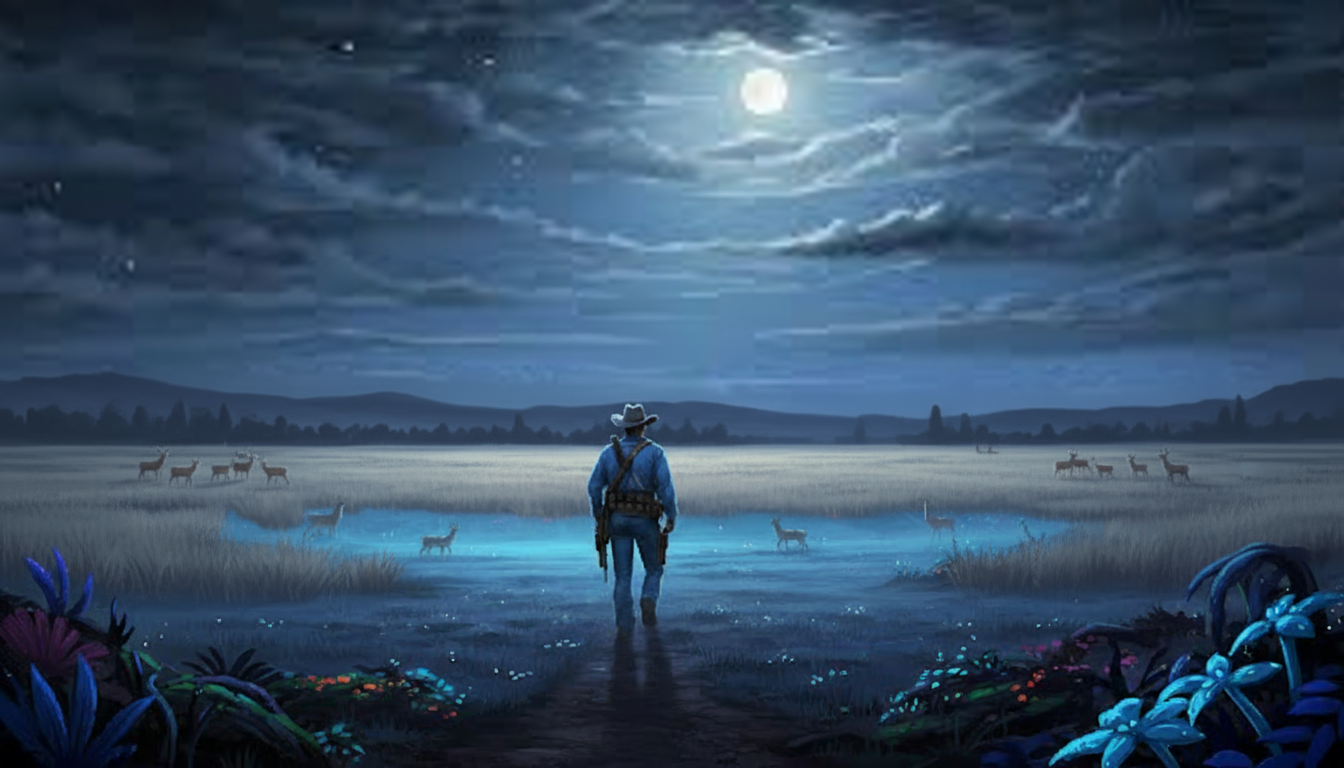
This regulatory acceptance reflects growing recognition of thermal imaging’s ethical advantages, particularly regarding positive species identification and shot placement precision. Wildlife agencies increasingly acknowledge that high-resolution thermal devices like the Pixfra Vulcan with 640×512 resolution provide superior target identification compared to traditional night hunting methods, potentially reducing misidentification risk.
According to market research from Grand View Research, the global hunting equipment market was valued at $33.2 billion in 2023 and is expected to grow at a CAGR of 4.2% through 2030, with thermal imaging technology representing the fastest-growing segment within the category. This market growth reflects increasing hunter adoption of advanced optical systems despite varied regulatory frameworks.
However, many states continue prohibiting thermal technology despite authorizing other night hunting methods. States including New Hampshire, Wisconsin, Michigan, and Colorado permit artificial lighting for night hunting but explicitly prohibit thermal imaging devices – creating a regulatory disconnect that forces hunters to use less effective and potentially less ethical traditional methods rather than modern technology.
Some states maintain regulatory ambiguity regarding thermal devices, with regulations neither explicitly authorizing nor prohibiting their use. This regulatory gray area creates significant compliance challenges for responsible hunters attempting to follow applicable laws. States including Kansas and Wyoming exemplify this ambiguity, with current regulations silent on thermal technology despite otherwise permitting night hunting activities.
Artificial lighting regulations also vary significantly between jurisdictions, with some states permitting unrestricted lighting while others implement specific requirements regarding light type, power source, mounting methodology, or activation methods. These variations create important compliance considerations, particularly for hunters operating near state boundaries where regulatory frameworks may change dramatically within short distances.
“The current patchwork of technology regulations creates unnecessary confusion for hunters committed to legal compliance. States should work toward standardized technology classifications that provide clear guidance while recognizing the ethical advantages modern thermal imaging provides through enhanced target identification capabilities.” – Wildlife Management Institute
Electronic calling device regulations present another area of technological variation, with some states restricting or prohibiting electronic callers during night hunting operations despite permitting them during daylight hours. These inconsistent regulatory approaches often reflect outdated assumptions about technological advantages rather than evidence-based wildlife management considerations.
Many states are currently engaged in regulatory review processes specifically addressing technological advancements in night hunting equipment. These reviews suggest continued evolution toward more permissive technology regulations as wildlife agencies gain experience with modern devices and recognize their potential advantages for effective wildlife management, particularly regarding invasive species control.
The mounting system used for thermal devices has also emerged as a regulatory consideration in some jurisdictions, with requirements specifying how devices may be attached to firearms. The Pixfra Rail mounting system provides standardized Picatinny interface compatibility, ensuring compliance with mounting regulations that specify standard rail attachment methods. This standardized mounting approach addresses both regulatory compliance and practical field reliability concerns.
Staying Legal While Night Hunting
Navigating the complex patchwork of night hunting regulations requires systematic approach ensuring compliance with all applicable requirements. Following these proven compliance strategies helps responsible hunters avoid unintentional violations while maximizing legal hunting opportunities.
Direct agency verification represents the most reliable compliance strategy, with hunters contacting state wildlife agencies directly before engaging in any night hunting activities. Online regulations summaries often contain outdated or incomplete information, particularly regarding rapidly evolving technology authorizations. A quick phone call to your state’s wildlife agency provides definitive clarification regarding current requirements, potentially preventing costly violations resulting from misunderstood or outdated regulations.
Written permission documentation provides essential protection when hunting on private property, where most night hunting opportunities exist. Beyond simply obtaining verbal approval, hunters should secure detailed written permission specifying authorized activities, permitted equipment, approved species, and exact property boundaries. This comprehensive documentation protects both landowner and hunter from potential misunderstandings while providing definitive evidence of authorization if questioned by enforcement personnel.
Property boundary verification takes on heightened importance during night operations when landmarks may be difficult to identify. Many compliance violations occur when hunters inadvertently cross from authorized private property onto prohibited public lands or neighboring properties. Using GPS technology with property boundary overlays provides reliable real-time verification ensuring operations remain within authorized areas throughout darkness periods.
Species identification capability becomes particularly critical during night operations, with misidentification representing a significant compliance risk. High-resolution thermal devices like the Pixfra Vulcan thermal scope with 640×512 resolution provide superior identification capability compared to lower-resolution alternatives, helping ensure targets match authorized species before any management decision. This technological advantage addresses both legal compliance and ethical hunting considerations.
Technology documentation practices provide important protection when operating in jurisdictions with ambiguous regulations or recent regulatory changes. Maintaining copies of applicable regulations, agency correspondence clarifying permissible equipment, and equipment specification documentation creates comprehensive compliance record if questions arise regarding specific technological capabilities. This documentation approach proves particularly valuable when utilizing advanced equipment in states with evolving regulatory frameworks.
Research from the National Shooting Sports Foundation indicates that wildlife violation citations related to night hunting have increased 32% since 2020, with most violations involving either unauthorized technology use or hunting unpermitted species. This enforcement trend highlights the importance of thorough regulatory compliance research before engaging in any night hunting activities.
Local law enforcement notification represents a proactive compliance strategy in areas where night hunting activities might generate public concern. Providing advance notice to local authorities regarding planned night hunting operations prevents potential misunderstandings if concerned citizens report suspicious lights or sounds. This professional courtesy approach builds positive relationships with enforcement personnel while preventing unnecessary response to misinterpreted hunting activities.
Equipment transportation protocol requires careful attention, particularly when traveling through multiple jurisdictions with varying regulations. Even when night hunting is legal at your destination, transportation of certain equipment may violate regulations in states you travel through. Many states implement specific transportation requirements for night hunting equipment, potentially requiring separation of optical devices from firearms or specialized storage methodologies during transportation.
The Pixfra Rail mounting system facilitates quick-detach capability enabling rapid compliance with transportation regulations requiring separation of optical devices from firearms. This quick-release functionality allows hunters to quickly configure equipment to meet specific transportation requirements when moving between hunting locations or traveling through multiple jurisdictions.
State-by-State Breakdown of Permitted Species
Night hunting regulations vary not only by state but also by target species, creating complex compliance requirements for hunters pursuing multiple species or traveling between states. This species-specific regulatory approach reflects varied wildlife management priorities across different regions.
Feral hog night hunting demonstrates the most permissive regulatory framework in states where these invasive species cause significant agricultural damage. Texas, Florida, Georgia, Alabama, and South Carolina all permit year-round night hunting of feral hogs on private land, with most authorizing full use of artificial lights and thermal imaging technology. This permissive approach reflects the estimated $2.5 billion in annual agricultural damage caused by feral hogs nationwide, creating economic incentive for aggressive population management.

According to research published in the Journal of Wildlife Management, states with permissive night hunting regulations for feral hogs show 27% higher annual harvest rates compared to states with restricted night hunting access, demonstrating the effectiveness of night hunting as a management tool for this invasive species.
Coyote night hunting regulations show significant regional variation, with southeastern and western states generally implementing more permissive frameworks compared to northeastern and upper midwestern regions. States including Texas, Georgia, Missouri, and Idaho explicitly authorize coyote night hunting with thermal imaging technology, while others permit night hunting but restrict equipment options. This regulatory variation creates critical compliance considerations for predator hunters operating across multiple states.
Raccoon and opossum night hunting represents one of the oldest traditional night hunting activities, with specialized regulations in many states specifically addressing these species. States that otherwise prohibit night hunting often maintain exceptions for raccoon hunting with dogs, reflecting the cultural significance of this traditional hunting method. These exceptions typically include strict limitations on equipment and methodology, with specific provisions regarding use of lights, firearms, and hunting methods.
Beaver night hunting authorization exists in several states experiencing significant property damage from beaver activities. These authorizations typically include significant restrictions regarding locations, methods, and equipment – creating specialized regulatory framework focused on damage mitigation rather than recreational hunting opportunity. States including Florida, Minnesota, and Oregon have implemented specific beaver night hunting provisions addressing water resource protection and property damage concerns.
Fox night hunting permissions exist primarily in southeastern states, with specific regulations regarding methods and seasons. These authorizations typically focus on traditional hunting approaches using dogs rather than modern technological methods, with specific limitations on equipment and methodology. Several states that permit fox night hunting explicitly prohibit thermal imaging or night vision technology, restricting operations to traditional lighting methods.
Armadillo night hunting has gained regulatory authorization in several southeastern states experiencing agricultural damage from these expanding populations. States including Florida, Georgia, and Alabama permit armadillo night hunting on private property, though with varying restrictions regarding equipment and methodology. This regulatory trend reflects the species’ continuing range expansion and increasing agricultural impact throughout the southeast region.
Bobcat night hunting remains prohibited in most jurisdictions despite authorized night hunting for other predator species. Even states with permissive night hunting frameworks typically exclude bobcats from authorized species lists, requiring strict daylight-only hunting for these valuable furbearers. The few exceptions typically involve specialized agricultural protection permits rather than general hunting authorization.
Species-specific authorization creates critical compliance considerations for night hunters, with regulations often permitting certain species while prohibiting others during identical time periods and locations. High-resolution thermal devices like the Pixfra Vulcan thermal scope provide essential species identification capability, helping ensure management activities exclusively address legally authorized species while avoiding prohibited species that may occupy the same habitats.
FAQs About Night Hunting Legality
What states allow thermal scopes for night hunting in 2025?
Texas, Georgia, Florida, Alabama, Missouri, Idaho, and Montana explicitly authorize thermal imaging devices for night hunting of specific species in their 2025 regulations. Several other states including Wyoming and Kansas maintain regulatory ambiguity, neither explicitly permitting nor prohibiting thermal technology. The trend shows increasing acceptance of thermal imaging for invasive species and predator management, with more states likely to authorize this technology in coming seasons. Always verify current regulations directly with state wildlife agencies, as technology authorizations continue evolving rapidly.
Can I get arrested for night hunting in states where it’s illegal?
Yes – night hunting violations can result in serious penalties including arrest, equipment confiscation, vehicle seizure, hunting license revocation, and substantial fines. States with strict night hunting prohibitions like California and Massachusetts aggressively enforce these regulations with specialized enforcement teams targeting potential violations. Even in states permitting some night hunting, violations regarding unauthorized species, prohibited equipment, or unpermitted locations can trigger criminal charges. These violations often carry enhanced penalties compared to daylight hunting infractions, with many states classifying them as gross misdemeanors or felonies.
Does a landowner permission letter protect me from night hunting violations?
Written landowner permission provides essential documentation but only protects against trespassing charges – not violations of wildlife regulations. Even with proper permission, you must still comply with all applicable hunting regulations regarding seasons, methods, equipment, species, and reporting requirements. Many states require specific permits beyond landowner permission for legal night hunting. The most comprehensive protection combines written landowner authorization with direct verification from wildlife authorities regarding all applicable regulations for your specific hunting methodology and target species.
Which night hunting regulations change most frequently?
Technology authorizations represent the most rapidly evolving aspect of night hunting regulations, with states continuously updating equipment restrictions in response to emerging capabilities. Thermal imaging authorization has seen the most significant regulatory changes, with multiple states modifying their positions on these devices in recent years. Species authorizations also frequently change, particularly regarding invasive species like feral hogs and coyotes. Regularly check for regulatory updates before each hunting season, as changes often occur annually in response to wildlife management priorities and technological developments.
Are night hunting regulations different on private vs. public land?
Yes – the distinction between private and public land creates significant regulatory differences in most states. Many states that permit night hunting on private property with landowner permission simultaneously prohibit all night hunting on public lands. Other states implement completely different regulatory frameworks between private and public properties, with distinct season structures, equipment authorizations, and species permissions. This regulatory divergence creates critical compliance considerations when hunting properties with mixed ownership or boundaries adjacent to public lands, particularly during night operations when property boundaries may be difficult to identify.
Regulatory Resources for Night Hunters
Staying current with night hunting regulations requires reliable information sources providing accurate, updated content addressing the complex legal framework governing after-dark operations. These authoritative resources help responsible hunters maintain full compliance while maximizing legal hunting opportunities.
State wildlife agency websites provide the most definitive regulatory information, though content quality and clarity vary significantly between states. Some agencies maintain comprehensive, user-friendly regulatory databases with detailed information regarding night hunting requirements, while others provide only basic summaries requiring additional clarification. Most state wildlife websites now include searchable regulation databases allowing keyword searches for specific terms like “night hunting,” “thermal,” or “after hours” – streamlining the research process for specific requirements.
Analysis from the Congressional Sportsmen’s Foundation indicates that 37 states now have some form of legal night hunting for at least one species, representing a 28% increase since 2015. This regulatory trend reflects growing acceptance of night hunting as a wildlife management tool, particularly for invasive and nuisance species control.
Direct agency contact represents the most reliable information source, particularly for questions involving technological authorizations or recent regulatory changes. Most state wildlife agencies maintain dedicated regulation hotlines staffed by personnel authorized to provide definitive interpretations regarding complex or ambiguous requirements. Recording the name, date, and specific guidance received during these conversations provides valuable documentation if questions later arise regarding compliance with discussed regulations.
Federal land management agencies maintain separate regulatory frameworks governing hunting activities on properties under their jurisdiction, with night hunting typically facing more significant restrictions compared to state regulations. The U.S. Fish and Wildlife Service, Bureau of Land Management, U.S. Forest Service, and Army Corps of Engineers each implement specialized regulations governing their respective properties, creating additional compliance considerations for hunters utilizing these public lands. Agency-specific websites provide preliminary information, though direct contact with local management offices delivers the most reliable guidance.
Conservation officer consultation provides another valuable information resource, with field personnel offering practical interpretation of regulations they personally enforce. Many state wildlife agencies encourage hunters to contact local conservation officers directly with specific questions regarding planned hunting activities, providing opportunity for detailed discussion regarding intended methods, equipment, and locations. This proactive approach builds positive relationship with enforcement personnel while ensuring clear understanding of applicable requirements.
Hunting regulation applications for mobile devices provide convenient access to current regulations, with many states now offering official apps containing complete regulatory information. These applications often include GPS-based property boundary identification, helping hunters verify authorized locations during field operations. While convenient, these applications should supplement rather than replace direct agency verification of night hunting regulations that may not be fully documented in summarized digital content.
According to research from the Outdoor Industry Association, approximately 19% of active hunters participated in some form of night hunting during the 2023 season, a significant increase from just 7% in 2018. This growing participation rate highlights the importance of clear regulatory guidance as more hunters explore after-dark opportunities.
Wildlife management organizations including the Quality Deer Management Association, National Wild Turkey Federation, and Rocky Mountain Elk Foundation often provide regulatory summaries for their members, including specialized information regarding night hunting where applicable. While these organizations strive for accuracy, their content should be verified through official sources before planning specific hunting activities, as regulatory details may change between publication cycles.
Professional guide services operating night hunting programs maintain comprehensive regulatory knowledge essential for their business operations. Established guides represent valuable information resources, particularly regarding practical application of regulations in specific field situations. Their experience navigating complex regulatory frameworks provides insights beyond basic regulatory text, helping hunters understand both explicit requirements and practical compliance considerations.
The most reliable regulatory compliance approach combines multiple information sources, with official agency verification providing definitive guidance supplemented by practical insights from experienced hunters familiar with local enforcement priorities and interpretations. This comprehensive research methodology ensures both technical compliance with written regulations and alignment with practical field enforcement realities.
Tools like the Pixfra Rail mounting system help ensure equipment compliance with various mounting regulations that may specify attachment methods for optical devices. The standardized Picatinny interface compatibility provided by this system addresses both regulatory compliance and practical field reliability concerns when operating in jurisdictions with specific equipment configuration requirements.
